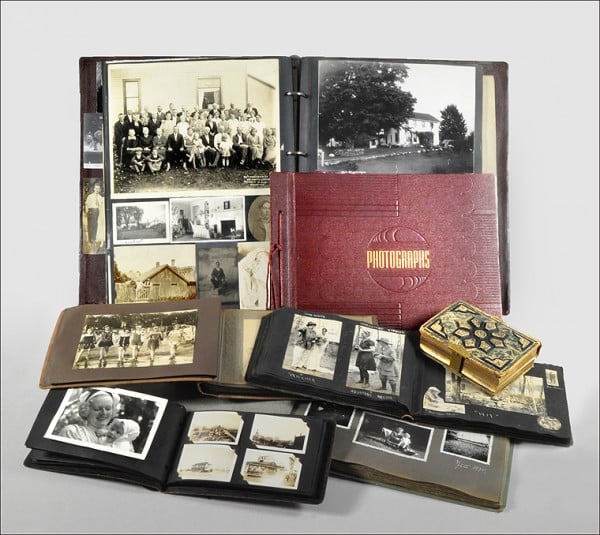Photo-safe. Archival. Acid-free. Why do these terms matter?
These are just some of the terms that are used when describing products in the photo industry . . . but what do they really mean? And why do we need to bother with them?
As anyone with a magnetic-page photo album from the 1980s knows, the way we store our photographs matters. The cheap cardboard pages, the adhesive, and the plastic covering all give off acids that over time, deteriorate the photos’ color, leave stains on the backs, and make it hard to remove photos without damaging them.
Older albums with vintage photos, photos stored in envelopes from the photo lab, and those just in a shoebox are at risk, too. And it’s not just prints—slides, negatives, and film reels can be damaged just from the containers they are stored in.

Lignin is a naturally occurring acid that is often present in the wood pulp used to make paper. The yellowing and brittleness of old papers (especially newsprint) is due to lignin and other residual acids activated by light, humidity, and temperature in a process that often ends up destroying the paper itself. Beyond the paper, the tapes, glues, and even photo corners that were used to attach photos to album pages are off-gassing chemicals that discolor and damage photographs. The good news is there are materials that are much safer for photographs.

If you are concerned about saving your family photos, you are dealing with their preservation. PRESERVATION is the act of preventing or neutralizing the deterioration of objects through proper storage and handling techniques. If you have photographs that are damaged and require repair, you should seek the advice of a trained conservator. CONSERVATION may include the stabilization and restoration of an object.
ARCHIVAL describes something that is of the quality suited to the needs of an ARCHIVE, an accumulation of primary source records, retained for their historic or cultural value. Museums, libraries, and art galleries are concerned with archival materials, and many photo-related products in the consumer marketplace are labeled “archival.”
Unfortunately, there are no official standards for what makes a material archival. However, for paper products, acid-free and lignin-free are two of the most common attributes.
ACID-FREE paper is made from pulp with a pH above 7 and often BUFFERED with calcium carbonate to neutralize acids formed with aging, or absorbed from the object.
[UNBUFFERED paper, without the calcium carbonate additive, should be used for storing dye transfer prints and cyanotypes; their image surface can be harmed by alkalinity.]
LIGNIN-FREE paper is made with less than 1% lignin content. “Acid-free” doesn’t always mean lignin-free, so any archival-quality product you choose should specify both.
When it comes to plastic enclosures, “acid-free” does not apply; instead, materials should be inert and stable. Lesser quality photo storage supplies are often made from polyvinyl chloride (PVC, or vinyl). Plasticizers make this compound unstable, and it deteriorates quickly, damaging photos. Instead, look for materials made from one of these inert plastics: POLYESTER (MYLAR), POLYPROPYLENE, and POLYETHYLENE.
Photo-safe Testing
PHOTO-SAFE is another term that is commonly used for photo albums and other photo products such as paper, plastics, and adhesives. It also has no official standard, and therefore one should not assume that it truly means what it says.
Currently, the only standardized test for long-term photo-safe materials is from the Image Permanence Institute, an organization dedicated to the development of best practices for preserving images and cultural heritage. Their Photographic Activity Test (PAT) is an international standard test (ISO 18916) that explores chemical interactions between photos and a given material, such as paper, inks, adhesives, photo albums, scrapbooking supplies, framing components, etc.
Materials passing the PAT can be considered photo-safe. However, passing the test does not indicate a material’s pH or lignin content; there are also standardized tests for these. A good archival supply manufacturer will provide all of that information.

While the focus here is on photographs, it’s worth noting that if a material is considered photo-safe, the implication is it will also interact safely with other objects.
This blog was written for the The Photo Managers. Archival Methods is an industry partner of The Photo Managers, and a sponsor of their annual Save Your Photos Month.
